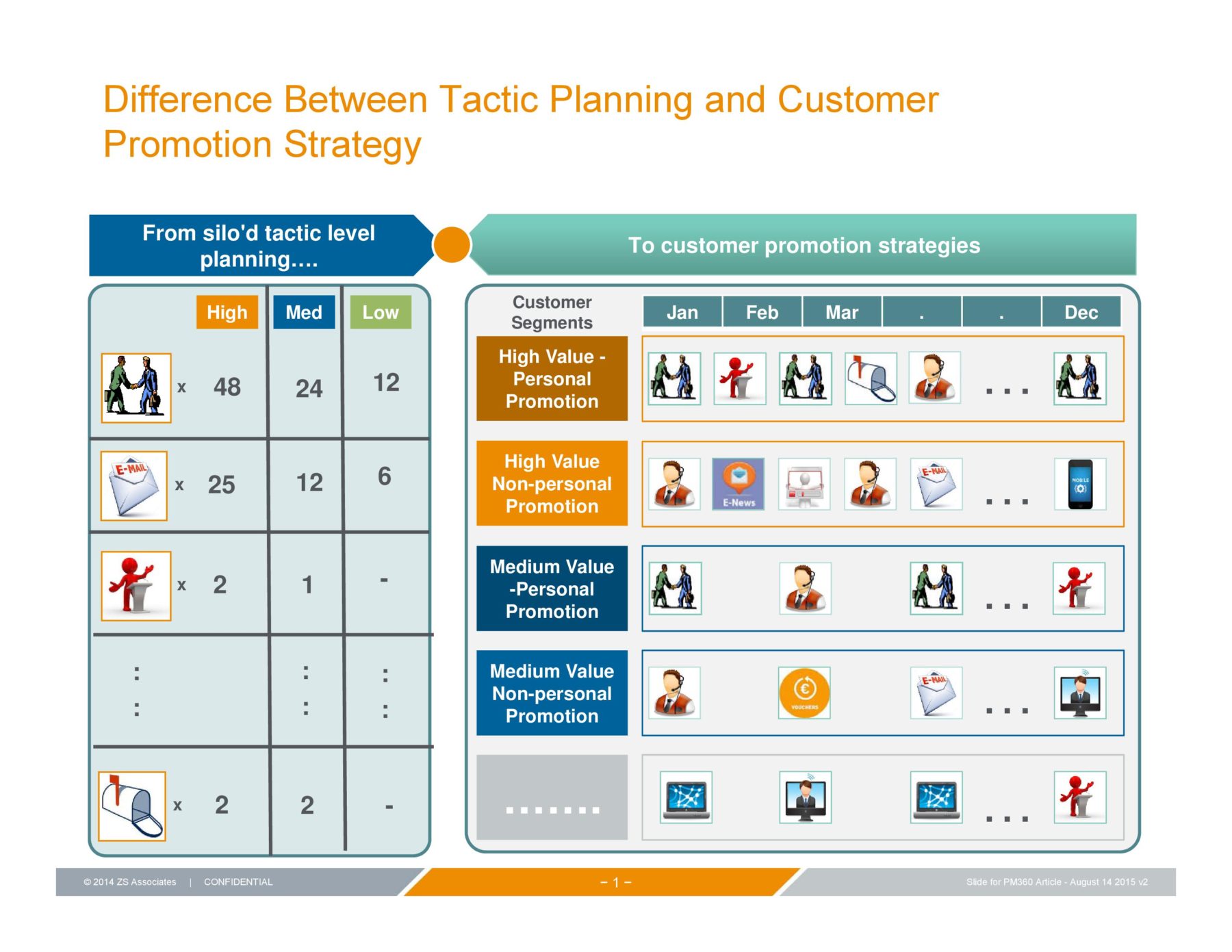Understanding customer preferences is critical to improving the customer experience, which, in turn, leads to improved marketing performance. Fortunately, there is an abundance of customer preference data.
Across both marketing and sales promotion tactics, we know when customers engage, with what content, for how long and actions taken after the engagement.
The question is: How do we turn this data into actionable customer insights that drive better marketing.
To develop customer data analytics, pharmaceutical companies should focus on three key areas:
1. Capture and integrate data at the customer level.
Almost all promotion channels, especially digital channels, generate customer engagement data. The key is to develop the appropriate procedures to capture the data across each tactic and ensure that it can be linked across tactics. Appropriate tagging of promotion assets and content will accelerate this process.
2. Transition from a “tactics-based” to a “customer-based” analytics approach.
Customer-based analytics models use linked engagement data and provide insight into customer behavioral preferences across tactics and content over time. Traditional, tactic-based models can only provide insight into the performance of a single promotion tactic.
3. It’s about customer strategy, not tactic strategy.
With this knowledge, it is now possible to develop and deploy a customer promotion strategy, not a tactic promotion strategy. The customer promotion strategy “pulls through” insights from customer analytics to optimize both content and channel over a six- to 12-month promotion period at the micro-segment level.
So, what does a customer promotion strategy look like and how does it differ from traditional silo’d tactic planning? The following graphic shows the difference:
Traditional silo’d tactic planning isolates each channel and uses historical data to optimize the channel frequency. In the example above, optimal sales force frequency is determined to be 48 details per year for the high-value segment. Independently, optimal email frequency is determined to be 25 for the high-value segment. This process is used to determine frequency for all tactics across the high-, medium- and low-value segments. Importantly, there is nothing in this approach to determine when each tactic will be delivered to market, and in what sequence.
In contrast, customer promotion strategies start with understanding channel and content preferences across customer segments. Based upon these preferences, the three-step approach described earlier is used to optimize the customer journey over time and designed to deliver a customer experience tailored to the customer’s preferences. Therefore, deciding when each tactic is delivered and in what sequence is tremendously important for customer promotion strategies.
The key question is: Does this new approach work? Our data has shown that customer promotion strategies deliver engagement rates two to seven times higher than tactic promotion strategies. Likewise, we see return on investment improvements two to nine times higher using customer promotion strategies compared to tactic promotion strategies. Customer analytics drives better marketing, and it’s exciting to see the pharmaceutical industry deliver better customer outcomes because of these analytics.







